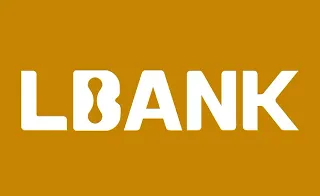The price of any asset in the market is determined by the balance between supply and demand:
Supply refers to the quantity of a good or asset in the market. When supply exceeds demand, prices fall.
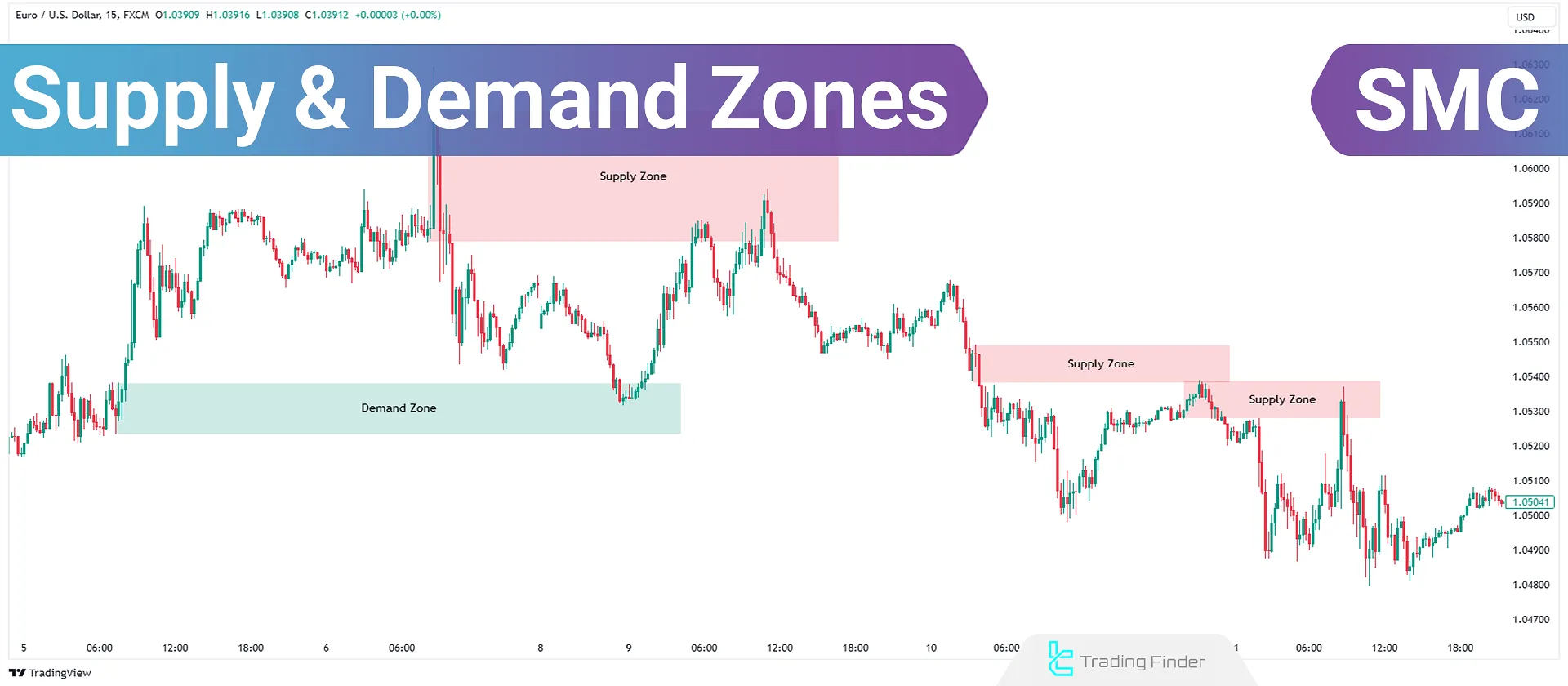
Demand refers to buyers' willingness to purchase an asset at the market price. When demand surpasses supply, prices rise.
What are Supply and Demand Zones?
In SMC trading and price action analysis, supply and demand zones are defined as:
- Supply Zone: Price region where abundant sell orders increase supply, causing prices to drop.
- Demand Zone: Price region where abundant buy orders increase demand, causing prices to rise.
Why Are Supply and Demand Zones Important?
Supply and demand Zones are crucial areas on the price chart for identifying reversal and trend continuation trades. These zones often trigger rapid market reactions.
According to Smart Money concepts, institutional traders enter these zones in significant volumes, creating increased supply or demand.
Traders should wait for the market to test these zones before executing buy or sell trades, following the footprints of institutional traders and Smart Money.
How to Identify Supply and Demand Zones
To identify supply and demand zones, you must first understand the basic concepts of market structure:
Break of Structure (BOS)
When the market trends, it breaks previous structures in the trend direction and continues moving. This phenomenon is called a Break of Structure (BOS):
- In an uptrend, the market breaks the previous high and creates a Higher High (HH).
- In a downtrend, the market breaks the previous low and creates a Lower Low (LL).
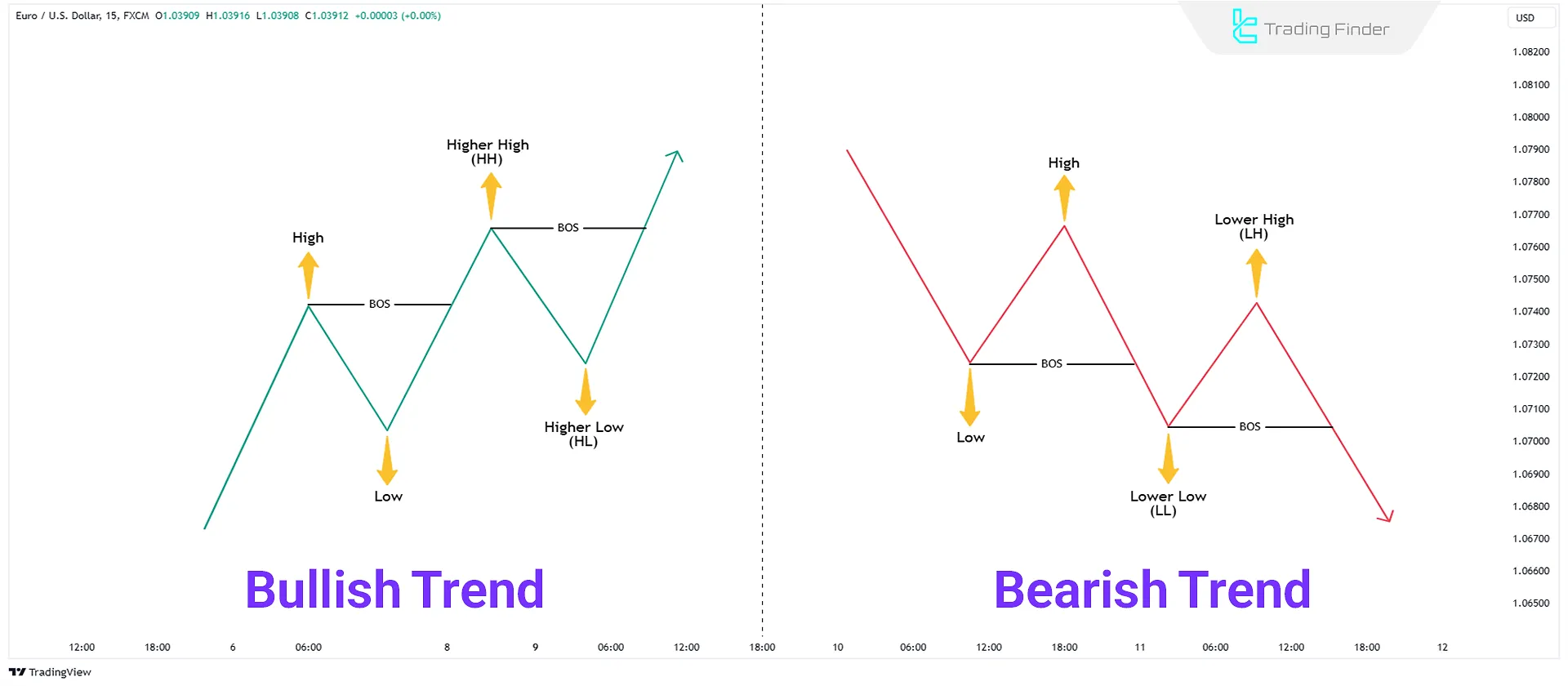
Change of Character (CHoCH)
Change of Character (CHoCH) indicates a market trend shift. It occurs when the market transitions from an uptrend to a downtrend or vice versa:
- In a shift from a downtrend to an uptrend, the previous Higher Low (HL) is broken, forming a new Higher High (HH).
- In a shift from an uptrend to a downtrend, the previous Higher Low (HL) is broken, forming a new Lower Low (LL).
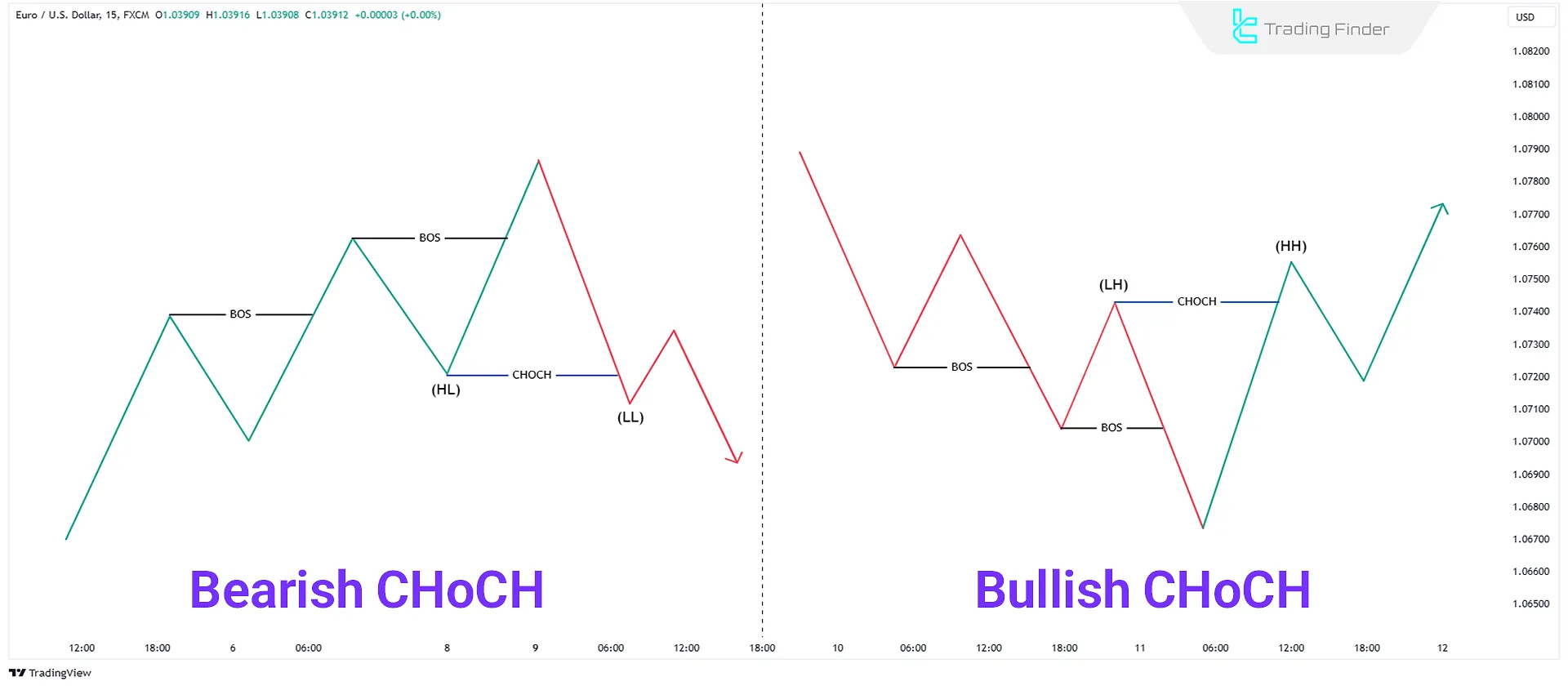
Identifying Supply Zones
A Supply Zone is a market area where selling pressure causes prices to fall rapidly. These zones usually appear during downtrends.
Supply zones are formed during pullbacks before a CHOCH or BOS. Following this, prices drop sharply. These pullbacks may consist of one or multiple bullish candles.
Identifying Supply Zones in EUR/USD Chart
Identifying Demand Zones
Demand Zone is a market area where buying pressure causes prices to rise rapidly. These zones typically form during uptrends.
Demand zones usually form during pullbacks before a CHoCH or BOS. Following this, prices rise sharply. These pullbacks may consist of one or multiple bearish candles.
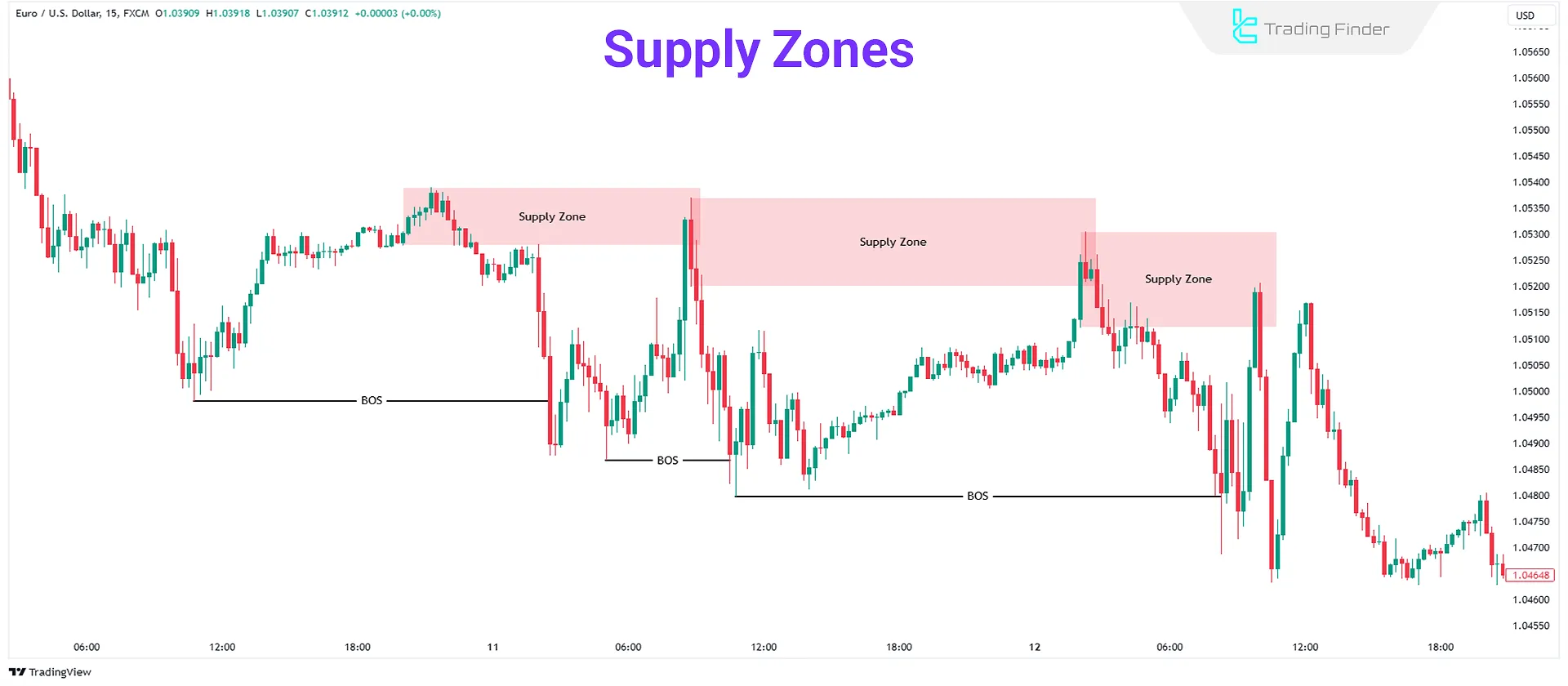
How to Trade Using Supply and Demand Strategy
To trade based on supply and demand zones, you must first determine the market trend:
Uptrend
- After a bullish CHOCH or BOS, identify the demand zone.
- When the price retraces and approaches the demand zone, execute a buy
- If the demand zone is large, wait for the market to test at least 50% of it with additional confirmations, such as lower timeframe structure changes.
- Place the stop loss a few pips below the demand zone.
Downtrend
- After a bearish CHOCH or BOS, identify the supply zone.
- When the price retraces and approaches the supply zone, execute a sell
- If the supply zone is large, wait for the market to test at least 50% of it with additional confirmations, such as lower timeframe structure changes.
- Place the stop loss a few pips above the supply zone.
Conclusion
In Smart Money Concepts (SMC), supply and demand form the foundation of price movements in financial markets. Supply and demand zones are critical chart areas that determine trend direction and provide trading opportunities.
Supply Zone represents high selling pressure, leading to price declines. These zones typically appear in downtrends following a BOS or CHOCH.
Demand Zone represents high buying pressure, leading to price increases. These zones typically appear in uptrends.



